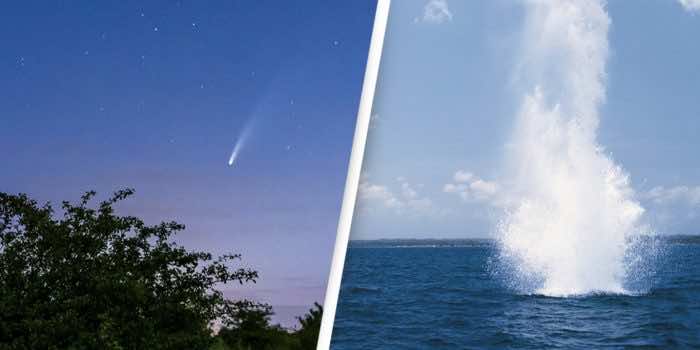In 2014, an object crashed into the ocean just off the coast of Papua New Guinea. The data collected then showed that the meteorite was an interstellar object. It was only the third such object known (after ‘Oumuamua and Borisov), and the first known to exist on Earth.
The object was named CNEOS 2014-01-08 and was half-meter wide. Its interstellar origins were first recognized by then graduate student Amir Siraj and Harvard professor Avi Loeb.
Using catalog data regarding the object’s trajectory, Siraj and Loeb concluded that it might be from beyond our Solar System due to its unusually high heliocentric velocity.

However, there might be a loophole in the accuracy of this information. The data from a US Department of Defense spy satellite, designed to monitor Earthly military activities.
As such, the exact error values of the measurement are a carefully guarded secret – the US military is wary of allowing the precise capabilities of their satellite to become public domain information.
The claim was bolstered in April 2022, when the US Space Force’s Space Operations Command’s Chief Scientist, Joel Mozer, reviewed the classified data in question and “confirmed that the velocity estimate reported to NASA is sufficiently accurate to indicate an interstellar trajectory”.
“I had the pleasure of signing a memo with @ussfspoc’s Chief Scientist, Dr. Mozer, to confirm that a previously-detected interstellar object was indeed an interstellar object, a confirmation that assisted the broader astronomical community.”
— U.S. Space Command (@US_SpaceCom) April 7, 2022
CNEOS 2014-01-08 is yet to be classified scientifically. However, the statement by the US Space Force was enough to convince Siraj and Loeb of its interstellar origin, and they have now moved on to proposing possible ways to find the object and study it closely.
Much of the meteorite would have burned up during its descent into Earth’s atmosphere, likely leaving only fragments behind, scattered across the ocean floor.
The tracking data from the satellite, combined with wind and ocean current data, can provide a reasonable search area of just 10km by 10km.
More importantly, the fragments are expected to be magnetic, so a ship trawling with a large magnet could potentially collect the minute meteorite fragments from the ocean floor.
Siraj and Loeb are working with an ocean technology consulting company to make it happen.
In an interview with Universe Today last year, Loeb explained that such a search could offer us “the opportunity to actually put our hands on the relic and figure out whether it’s natural, whether it’s a rock, or whether, you know, a small fraction of those [interstellar objects] might be artificial.”
“This result does not imply that the first interstellar meteor was artificially made by a technological civilization and not natural in origin,” he and Siraj write in their most recent paper outlining the ocean expedition. But it’s clear that Loeb thinks it wouldn’t hurt to go find the object and take a look.


